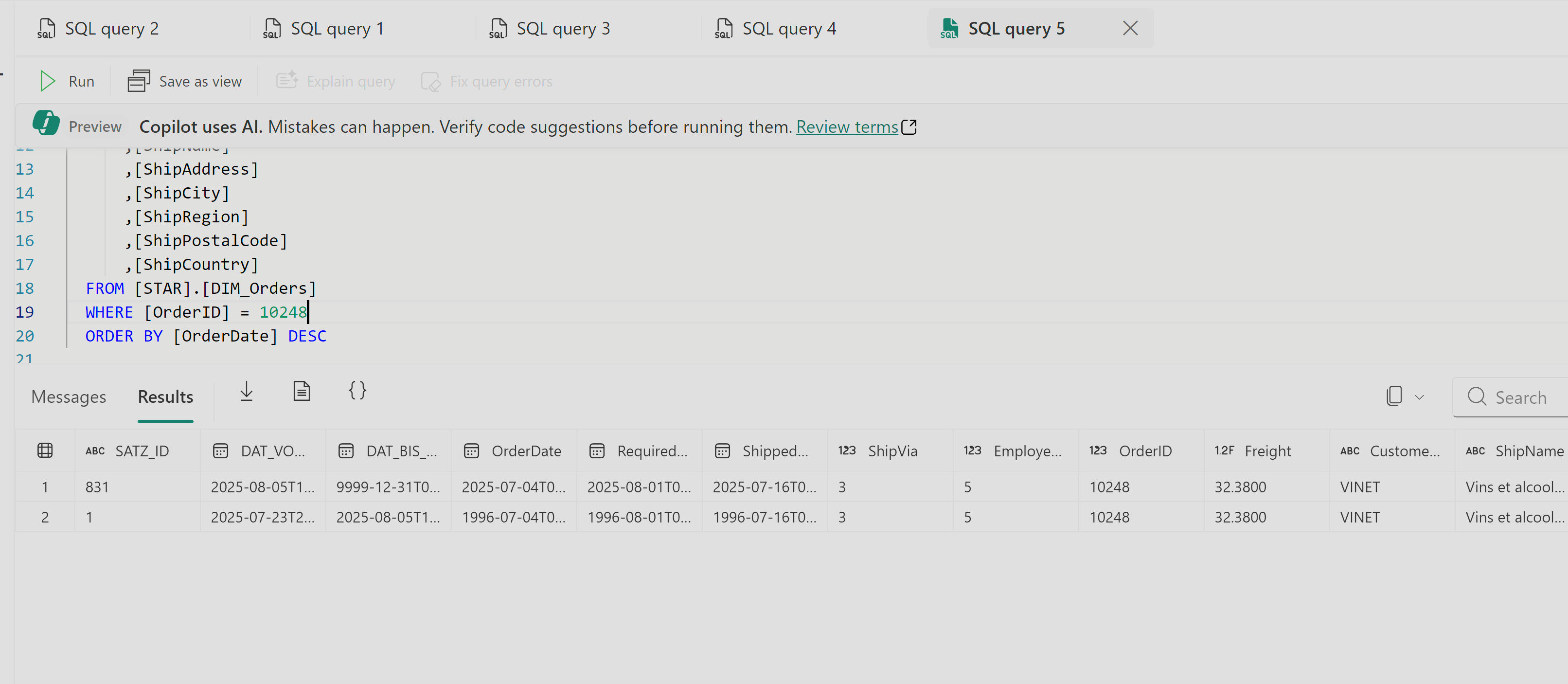Accelerate Data Warehousing in Microsoft Fabric with AnalyticsCreator

Modern enterprises need structured, governed data warehouses for financial reporting, compliance, and operational analytics—even as they adopt cloud-native platforms like Microsoft Fabric. While Fabric provides a unified data foundation, it does not natively automate Kimball-based dimensional modeling or data warehouse deployment.
AnalyticsCreator solves this challenge by offering a metadata-driven platform that automates the design, deployment, and orchestration of dimensional data warehouses directly into Microsoft Fabric SQL. It eliminates manual coding, accelerates delivery, and ensures governance at every step.
TL;DR
- AnalyticsCreator automates Kimball-based modeling into Fabric SQL.
- Generates DACPAC deployments for structured warehouse layers.
- Creates ADF pipelines for ingestion with SCD logic and auditing.
- Ensures OneLake Delta integration for Power BI and Spark.
- Result: Faster delivery, better governance, and full lakehouse compatibility.
Why AnalyticsCreator for Fabric SQL?
Microsoft Fabric SQL is a cloud-scale relational engine that supports structured data storage and integrates tightly with OneLake. However, building a dimensional warehouse in Fabric SQL manually requires significant effort—modeling tables, writing ETL logic, and maintaining governance.
AnalyticsCreator automates this entire process. It converts metadata-driven models into Fabric SQL deployments, generates ADF pipelines, and ensures that all tables are lake-aware for downstream analytics. This approach reduces complexity, enforces standards, and accelerates time-to-value.
Step-by-Step: How AnalyticsCreator Works with Fabric SQL
Step 1: Model Your Warehouse with Kimball Methodology
AnalyticsCreator provides a visual design studio for creating star schemas based on the Kimball methodology. You can define fact and dimension tables, hierarchies, and conformed dimensions across business domains. The platform supports Slowly Changing Dimensions (Type 1 and Type 2) and applies standard naming conventions and historization rules automatically.
This metadata model becomes the single source of truth for every artifact—tables, pipelines, documentation, and semantic layers—ensuring consistency and governance.
Step 2: Automate Deployment into Fabric SQL
Once your model is complete, AnalyticsCreator automatically generates and deploys a DACPAC to Fabric SQL—no manual coding required. It creates a layered architecture for your warehouse:
- IMP (Import) – Raw data ingestion
- STG (Staging) – Initial transformations
- TRN (Persisted Staging) – Cleansed and validated data
- DWH (Data Warehouse) – Curated fact and dimension tables
- STAR (Semantic Layer) – Business-friendly models for BI
This structured approach ensures data quality, scalability, and governance while enabling self-service analytics in the STAR layer.
Step 3: Generate ADF Pipelines for Ingestion
AnalyticsCreator automatically creates parameterized Azure Data Factory (ADF) pipelines to load data from source systems into Fabric SQL. These pipelines:
- Support incremental load patterns based on metadata.
- Embed SCD logic, auditing, and error handling.
- Use dynamic configuration for environments and credentials.
- Orchestrate end-to-end workflows without manual intervention.
This automation accelerates delivery and reduces operational risk.
Step 4: Enable Consumption via OneLake Delta Tables
All Fabric SQL tables deployed via AnalyticsCreator are automatically surfaced as Delta Lake tables in OneLake. This means:
- Power BI can connect directly using Direct Lake mode—no data duplication.
- Spark notebooks and data science tools can query the same curated datasets.
- A unified consumption layer supports both structured BI and advanced analytics.
Key Benefits of AnalyticsCreator + Microsoft Fabric
| Feature | Business and Technical Value |
|---|---|
|
Metadata-Driven Modeling |
Centralized definitions reduce manual rework, enforce consistency, and improve governance. |
|
Fabric SQL Automation |
Deploy dimensional structures quickly and reliably. |
|
Reusable ADF Pipelines |
Out-of-the-box ingestion logic for dimensions, facts, and SCDs speeds up delivery cycles. |
|
CI/CD and Audit Compliance |
Supports Git integration, parameterized environments, and change tracking. |
|
Lakehouse Integration |
All relational tables are lake-aware and available for Spark, Power BI, and Fabric Notebooks. |
Final Takeaway
With AnalyticsCreator, your team can bring traditional data warehouse modeling into the modern cloud-native world without compromise. You benefit from:
- Kimball-based dimensional modeling built on metadata.
- Automated deployment to Microsoft Fabric SQL.
- ADF pipeline generation for scalable ingestion.
- Delta table exposure in OneLake for lakehouse analytics.
Frequently Asked Questions
Does AnalyticsCreator replace Fabric SQL?
No. AnalyticsCreator automates the design and deployment of dimensional models into Fabric SQL—it does not replace it.
Can I reuse my existing Kimball models?
Yes. AnalyticsCreator translates Kimball-based designs into Fabric-ready deployments.
How does this improve governance?
AnalyticsCreator enforces metadata-driven consistency, audit compliance, and Git-based CI/CD.
Does this work with Power BI Direct Lake mode?
Absolutely. All tables deployed via AnalyticsCreator appear as Delta Lake tables in OneLake, enabling Direct Lake connectivity.





